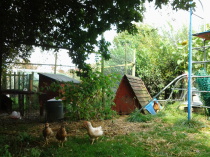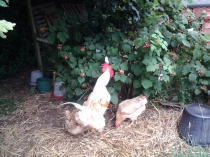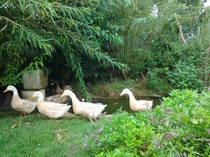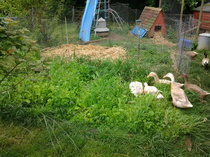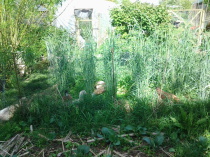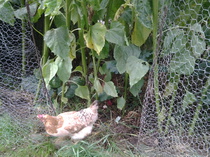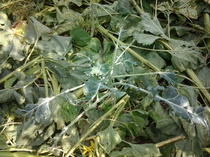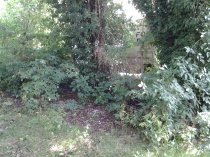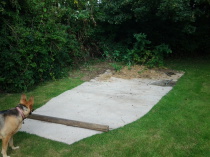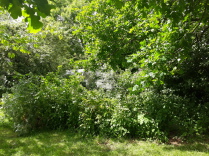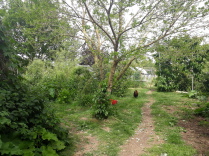
Forage - Forest Garden
The Forest Garden section of Foxfield is set up as a foraging space for poultry, kept at very low stocking rate. Below are some of the stages this has gone through as the succession from annual plants to more perrenial bushes and trees has occurred over the years. Plus generations of chickens & ducks have had their preferences!
We have been featured in Tomas Remiarz's book Forest Gardening in Practice if you are interested.
The chickens and ducks share a foraging space in our garden which has been designed to offer versatile and successional plants to enrich their diet, but also to offer enrichment in the form of leaf litter, shade, roosting, hiding space, dust baths, etc. We do feed them layers pellets, but they prefer to forage and our feed bill has greatly reduced, since they just top up with feed when nothing more interesting takes their fancy.
Top favourites - sunflower seeds, sprouted locally grown wheat, all brassicas, all salads especially rocket, chickweed, sorrel, mouldy tomatoes, ant nests, homegrown rye left in the heads, comfrey, gone over sweetcorn, beet tops, chard, elderberries, blackberries, windfall apples.
To benefit from the dirty nutrient rich duckpond water, I've planted a small willow coppice next to the pond so that water can be baled (using an old water tank and large piping) to the willow. This provides shade and leaf litter for chickens as well as the ducks, lovely mud for the ducks to sift through, and willow for basket weaving and fuel for our wood burner. Willow coppice wood can be cut with loppers and will dry in under 6 months and makes fantastic quick burn fuel for our range cooker. The growth you see here is just 2 years, much faster than non irrigated willow. A good example of a permaculture beneficial relationship!
As well as fruit trees and perennial stuff (see the diploma write up for planting list) I also have two beds for successional annual crops for them to forage. Here they are starting grazing some green manure mix which they love, plus feeds the bed. Obviously the bed benefits from manure. The bed behind, fenced off to stop them getting at it and kicking it everywhere, is being mulched with dirty bedding too.
Here the sunflowers that have set seed have been cut down in situ as mulch, the seed heads dried for winter feed, a few left for the wild birds and to self seed for next year. Hard to see, but the pecked brassicas are left to recover, in a couple of months the chickens and ducks will be able to graze on the regrown cabbage leaves during the winter and kick about in the rotting sunflower stalks for worms etc.
Adjoining the chicken and duck area is this top end of the garden, left to grow wild. In the winter, this provides a whole new grazing/foraging space, with little or no effort on our part, this shadey woodland zone provides new foraging whilst relieving the grass/beds in the other space. Keeping this away from them is like keeping back toys from children, if they get used to it they dont appreciate it as much, nor do the two areas have time to recover and repopulate with beetles, grubs etc.
And a new bed is being added to this top end of the garden to offer additional crops for poultry and us. The old carpet is killing off the grass ready for planting next year. You can just make out some raspberries - they can eat the low ones, we'll eat the higher up ones! Forest garden come poultry forage garden, more useful than lawn anyway.
The above and expanded beds a few years later featuring nitrogen fixing Seabuckthorn at the back, elderberry, redcurrants, blackcurrants, raspberries, wormwood, and alpine strawberry ground cover. Chop and drop of nettles and other weeds takes place each year but it is a tangle that provides wildlife space, interest, shade, poultry forage and berries for us. Still waiting to see if sea buckthorn male and female bushes are there and for first flowering (been in 2 years now).
In 2020 the trees, here a mulberry in early leaf (with understorey of raspberry, gooseberry, juneberry, japenese wineberry) and behind to right a cherry, have all grown big to have shaded out any annual planting space. Foreground shows some burdock - which I'm encouraging in this area, creates chop and drop mulch but also lovely burdock root tea and very tasty root (but need a lot and takes an effort to harvest for that quantity).
